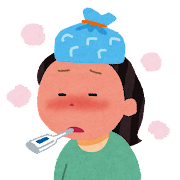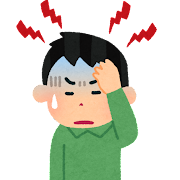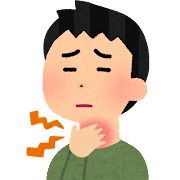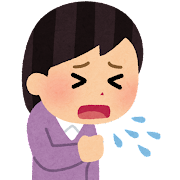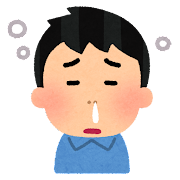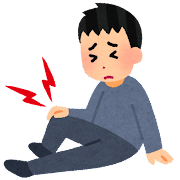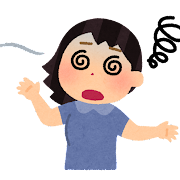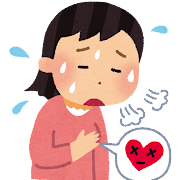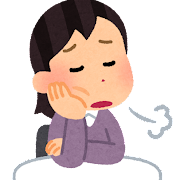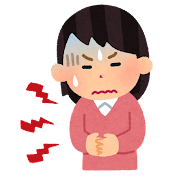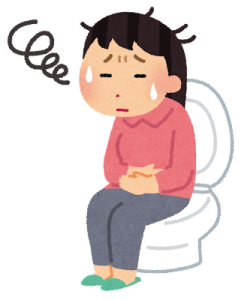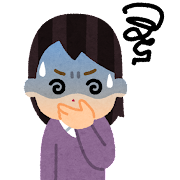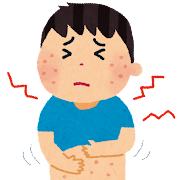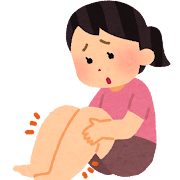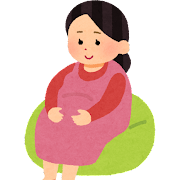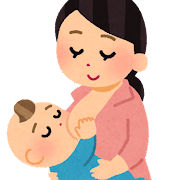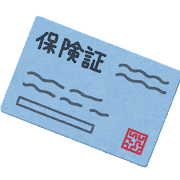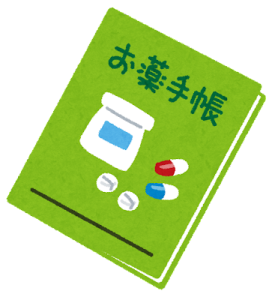How to write a medical questionnaire at a hospital in Japan
2022.12.08
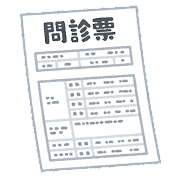
When you go to a hospital, you write a medical questionnaire before you see a doctor.
Let’s learn about the medical questionnaire and write it by yourself!
There are three points for writing a medical questionnaire.
1. Your personal information
2. Current symptoms
3. Past Medical History
1. Your personal information
At first, you write down your personal information such as your name, address, and age.
- 氏名(しめい)Name
Please write your name.
- フリガナ(ふりがな)phonetic characters
If the Japanese characters were written “ふりがな(hurigana)”, you write phonetic characters of your name in ひらがな(hiragana). If the Japanese characters were written “フリガナ(hurigana)”, you write phonetic characters of your name in カタカナ(katakana).
- 生年月日(せいねんがっぴ)date of birth
Please write your date of birth. If there is Chinese characters “大・昭・平・令”, they represent Japanese era name. “大” means “大正(たいしょう)(Taisho)”, “昭” means “昭和(しょうわ)(Syowa)“, “平”means “平成(へいせい)(Heisei)”, “令”means “令和(れいわ)(Reiwa)”. When it says “西暦(せいれき)(Seireki)”, you write your year of birth in western calendar. A.D. 2022 is 4th year in Reiwa period. A.D. 2000 is 12th year in Heisei period.
- 年齢(ねんれい)Age
Please write down your age.
- 住所(じゅうしょ)Address
Please write down your postal code next to “〒”. Under your postal code. please write down your address.
- 電話番号(でんわばんごう) Phone number
Please write down your phone number. If you have a coded telephone, please write down its number, too.
2. Current symptoms
Next, you write down what symptoms you suffer from now. Please put a check in a check box next to the symptoms’ name.
発熱(はつねつ):Fever 頭痛(ずつう):Headache のどの痛み(のどのいたみ):Sore throat
咳・たん(せき・たん):Cough and phlegm
鼻水・鼻づまり(はなみず・はなづまり):Runny nose and stuffy nose
関節の痛み(かんせつのいたみ):Joint pain
めまい:dizziness ふらつき:Lightheaded
動悸(どうき): Palpitation だるさ:Dull
食欲がない(しょくよくがない): Lack of appetite
腹痛(ふくつう):Stomachache
下痢(げり): Diarrhea 血便(けつべん): Bloody stools
吐き気(はきけ):Nausea
皮膚のかゆみ(ひふのかゆみ): Itchy skin
むくみ:Swelling
その他(そのた):Others
Please refer to multilingual medical questionnaires which are available on the Internet, too.
3. Past Medical History
Lastly, you write down your past medical history and allergy on medicine and food.
- 現在治療中、または過去にかかった病気はありますか? (Past medical history)
If you have a past medical history, please write down the name of diseases. If you do not know the name in Japanese, please show your medication record.
- 現在服用中の薬はありますか?(Medicines currently taking)
If you take medicines regularly, please write down the name. If you do not know the name in Japanese, please show your medication record.
- 薬や食べもののアレルギーはありますか?(Allergy on medicine and food)
If you have had allergy reaction when you took a medicine, please write down its name. Also, if you have allergy on food, please write down the name of the food.
- お酒は飲みますか?(Drinking habitat)
If you usually drink alcohol, please put a check in a check box next to “飲む(yes)” and write down how many times you drink, what kind of alcohol you drink, and how much you drink per week. If you do not drink alcohol regularly, please put a check in a check box next to “飲まない(no)”.
- 煙草は吸いますか?(Smoking habitat)
If you smoke regularly, please put a check in a check box next to “吸う(yes)” and write down how many cigarettes you smoke per day. If you do not drink alcohol regularly, please put a check in a check box next to “吸わない(no)”.
- 女性の方のみの質問(Questions for Women)
妊娠中ですか?(Are you pregnant?)
If you are pregnant, please put a check in a check box next to “はい(yes)” and write down your pregnancy period. If you are not pregnant, please put a check mark in a check box next to “いいえ(no)”.
授乳中ですか? Are you breastfeeding?
If you breastfeed now, please put a check in a check box next to “はい(yes)”. If you do not, please put a check in a check box next to “いいえ(no)”.
What to bring to a hospital
You will have to show your insurance card at a hospital. If you have お薬手帳(Okusuri Techo: prescription record), please also show it. By showing your prescription record, the hospital will understand your medical history and the kinds of medicine that you have taken.
- Please also refer to the following page.
“Departments in hospital” https://social-b.net/baiyu/en/clinic20220221en/
“What to do in such cases? Number 119 and Number 110”
https://social-b.net/baiyu/en/sos20220325en/
“Heatstroke” https://social-b.net/baiyu/en/heatstroke0910/
- If you have further inquiries, please feel free to ask questions from the link below.
https://social-b.net/baiyu/en/question-box/
